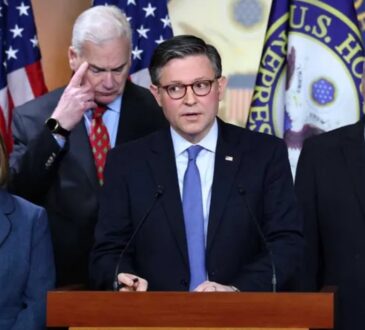
President Donald Trump has received a temporary approval from the U.S. Supreme Court that allows his administration to deport certain immigrants to countries where they might face torture, even though American law and an international treaty specifically forbid this kind of action. This decision was made quietly by the Court’s Republican-appointed justices, who issued a brief statement without explaining their reasoning. Justice Sonia Sotomayor strongly opposed the decision and wrote a detailed 19-page dissent, which was supported by the other two Democratic justices. She criticized the Court’s silence and warned of the serious harm this decision could cause.
What makes this situation particularly troubling is that the law in question, which the U.S. has followed for decades, is supposed to protect people from being sent to places where they are likely to be tortured or abused. This law is based on a treaty called the Convention Against Torture, which the United States agreed to over thirty years ago. It says that no one should be forced out of the country and sent somewhere they are likely to suffer cruel or inhuman treatment. It’s a clear and firm rule that’s meant to keep people safe, no matter where they come from or why they are being deported.
Normally, when someone who is not a U.S. citizen is facing deportation, they are given the right to a hearing in front of an immigration judge. During this hearing, they are told which countries they might be sent to, and they are given a chance to explain if they fear being harmed or tortured in any of those countries. If the judge agrees that their fears are real and serious, then the person cannot be sent to those places. The judge can still approve the deportation overall, but not to any country that might violate the treaty’s protections.
In the case being discussed, known as *Department of Homeland Security v. D.V.D.*, the immigrants involved had already gone through this entire process. They had their hearings, made their cases, and in some instances, judges agreed that they should not be sent to specific countries. Then, after all of that was done, the Trump administration announced that it would deport them anyway — not to the countries the judge had reviewed, but to entirely different countries that had not been part of the original process. These new countries had not been evaluated for safety, and the immigrants were not given any chance to object or explain why they might be at risk there.
This maneuver effectively sidesteps the legal protections that are supposed to be in place for people who fear torture. The Trump administration is using what it claims is a loophole to deport immigrants without giving them a fair opportunity to raise concerns about their safety. By selecting different countries at the last minute, after the legal process is over, the administration avoids having to go back before a judge. In practical terms, this means immigrants are being put on planes and sent into potentially life-threatening situations with no legal review or protection.
Even more alarming is that the countries the Trump administration has chosen are known to be extremely dangerous. For instance, some immigrants are being sent to South Sudan, a country that has recently been torn apart by civil war and where peace remains fragile. Others are being sent to Libya, where violent opposition groups have made it clear that immigrants arriving from the U.S. could face attacks. According to Justice Sotomayor’s dissent, these deportations would place people directly in harm’s way, in environments of chaos and hostility.
This pattern suggests that the administration is not just overlooking safety concerns but may be deliberately choosing places that are known to be unsafe. It creates a kind of trap: even if an immigrant successfully argues that returning to their home country would lead to torture, the government can still send them to a different country that may be just as dangerous or worse — without ever giving them a chance to protest or ask for protection.
The Supreme Court’s refusal to explain its reasoning adds to the uncertainty and concern. Without knowing why the majority of justices agreed with the administration, it’s impossible to say whether they might change their view later, or what arguments might influence them. The silence from the Court leaves the public, and especially the affected immigrants, in the dark. It’s a deeply unsettling move that undermines long-standing legal and moral commitments to protect vulnerable people from harm, and it sends a message that even firm legal protections can be pushed aside without explanation.




